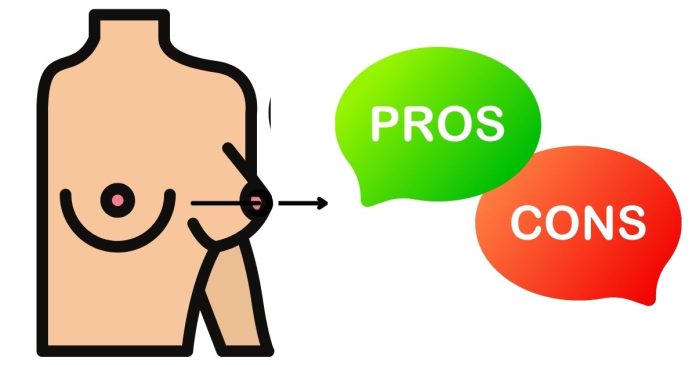Nipple piercings have been around for centuries, often symbolizing boldness, individuality, or personal expression. In recent years, they’ve gained popularity across genders, thanks in part to celebrities and social media influencers proudly showing them off. If you’re considering getting your nipples pierced, it’s essential to weigh the pros and cons before making a decision.
Let’s dive into the benefits and potential drawbacks of nipple piercings to help you decide if they’re right for you.
Pros of Nipple Piercings
1. Enhanced Aesthetic Appeal
- Nipple piercings can be a striking and stylish form of body art, adding a unique flair to your appearance.
- Jewelry options include bars, rings, and shields in various designs and materials, making it easy to customize the look to suit your personality.
2. Boost in Confidence
- Many people report feeling more confident and empowered after getting their nipples pierced. It can be a way to reclaim your body, celebrate individuality, or feel sexy.
3. Increased Sensitivity
- For some individuals, nipple piercings can heighten sensitivity due to the added stimulation from the jewelry. This can enhance physical experiences and pleasure.
- However, sensitivity varies from person to person, and the effects depend on individual anatomy and healing.
4. Gender-Inclusive Style
- Nipple piercings are popular among all genders, making them a versatile and inclusive choice for body modification.
5. Conversation Starter
- While they’re often a private choice, nipple piercings can be a fun talking point (if you choose to share). They can also connect you with others who have similar interests in body art.
Cons of Nipple Piercings
1. Pain and Healing Process
- Nipple piercings are known to be more painful than other piercings due to the dense tissue. The pain can vary depending on individual tolerance.
- Healing can take 6–12 months, and during this time, you may experience soreness, swelling, and discomfort.
2. Risk of Infection
- Nipple piercings require diligent aftercare to avoid infection. If not cleaned properly, bacteria can enter the piercing, leading to redness, swelling, pus, or pain.
- Infections can sometimes become serious and may require medical attention.
3. Snagging and Irritation
- Nipple jewelry can easily snag on clothing or towels, which can be painful and potentially damage the piercing.
- Tight or abrasive fabrics can also irritate the area, especially during the healing process.
4. Scarring and Rejection
- Some people may experience scarring or keloids (raised scar tissue) around the piercing.
- In rare cases, the body may reject the piercing, pushing the jewelry out, which can lead to discomfort and scarring.
5. Impact on Sensitivity
- While sensitivity often increases, some individuals report a decrease in sensation after getting their nipples pierced. This could be due to nerve damage or irritation.
6. Interference with Activities
- Sports, gym activities, or any physical activity involving chest movement can become uncomfortable, especially during the healing period.
- Certain jobs or uniforms requiring tight clothing might also make the piercing challenging to manage.
7. Breastfeeding Challenges
- Nipple piercings can complicate breastfeeding. Jewelry must be removed to prevent choking hazards for the baby, and scarring from healed piercings can potentially block milk ducts.
8. Cost and Maintenance
- Nipple piercings can be pricey, especially if you choose high-quality jewelry.
- Regular cleaning and long-term maintenance are essential to keep the piercing healthy.
How to Minimize Risks
If you’ve weighed the pros and cons and still want to get a nipple piercing, follow these tips to reduce risks and ensure a smooth process:
- Choose a Professional Piercer
- Research reputable piercing studios with licensed and experienced piercers. Check for reviews and ask about sterilization practices.
- Use High-Quality Jewelry
- Opt for implant-grade titanium or surgical stainless steel to minimize the risk of allergic reactions or irritation.
- Follow Aftercare Instructions
- Clean the piercing with a saline solution twice a day. Avoid harsh soaps or alcohol-based products.
- Do not touch or twist the jewelry unnecessarily.
- Avoid Swimming During Healing
- Pools, hot tubs, and natural bodies of water can introduce bacteria and increase the risk of infection.
- Wear Loose Clothing
- During the healing period, choose loose-fitting, breathable fabrics to prevent irritation.
Is a Nipple Piercing Right for You?
Nipple piercings are a bold and personal choice. They can enhance your confidence, style, and even physical sensations. However, they also come with potential risks, such as pain, infection, and long healing times.
If you’re considering a nipple piercing, take the time to research reputable piercers, understand the aftercare requirements, and prepare for the healing process. It’s a commitment, but for many, the rewards are worth it.
Have you had experience with nipple piercings, or are you thinking of getting one? Share your thoughts and tips in the comments below!



